Denim vs Jeans: Unweaving The Confusion
Denim and Jeans are words you hear often used in the same breath when discussing clothing. It’s so common that people often use the words interchangeably. And that has created a certain level of confusion among people regarding Denim vs Jeans.
You can differentiate the two things based on their types. Denim is a type of fabric, and Jeans are a type of garment. The former is a material, and the latter is a consumer good or product.
Linguistic ambiguity is the main reason behind the confusion between Denim and Jeans. Jeans are a global product, and many local languages don’t distinguish the material from the garment. In this article, we’ll give an in-depth analysis of jeans and denim to clarify such confusion.
History of Jeans and Denim
The history of this fabric dates back to the Renaissance period in the 16th century. It originated in Genoa, Italy. For a long time, the default name for this fabric was Genoa cloth. It quickly gained popularity as a highly durable clothing material, but it went by various other names back in those days.
As a twill fabric, it boasts high wear resistance, but it was never a fabric of uniform quality. It was a twill fabric, and each region produced a slightly different variant with different textures and coloration. It wasn’t until the early 20th century that the fabric became more standardized due to the increase in large-scale production facilities.

Jeans are a type of trousers made of denim, but these appeared much later in the late 19th century. Originally jeans were developed for workers because it was sturdy and long-lasting. Gold miners during the gold rush preferred denim clothing. It was one of the few fabrics that could handle the constant water erosion.
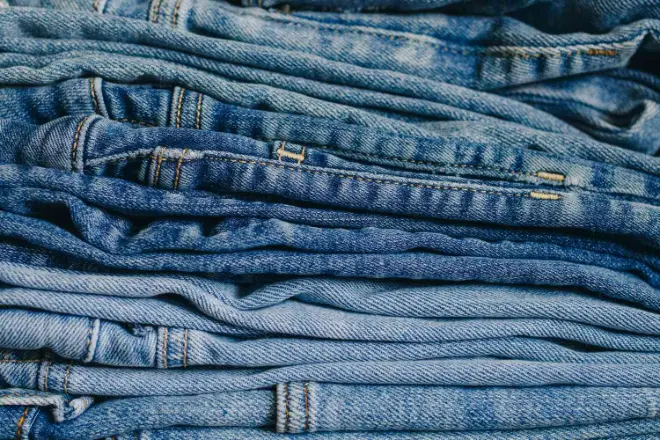
It wasn’t until the late 19th century that denim entered the fashion industry as a casual clothing material. By the early 20th century, it became mainstream fashion due to mass media.
The iconic Levi Strauss 501 jeans appeared on the market in 1901. These are the five-pocket standardized jeans most people recognize today. It was around this time that Jeans production became heavily modernized and consistent.
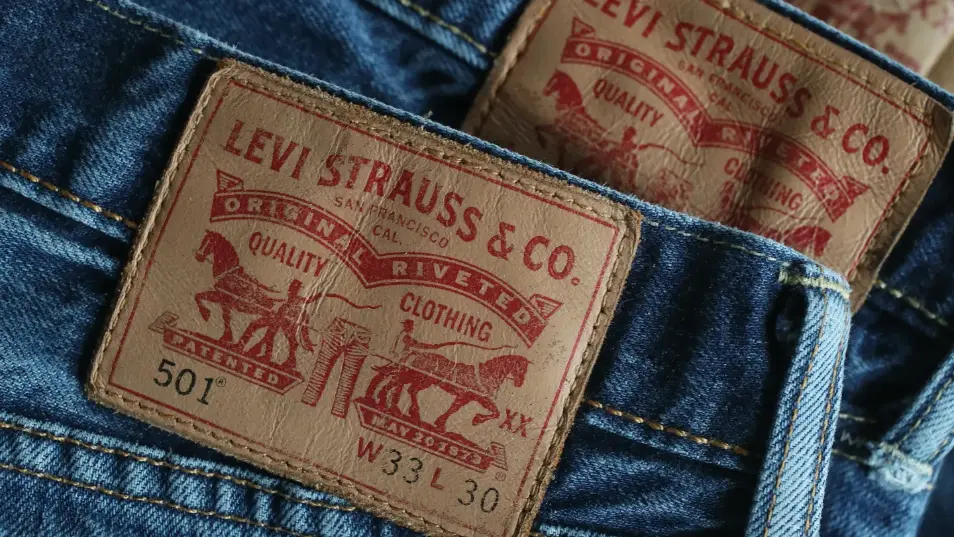
Jeans became even more iconic due to the counterculture movement as many activists at the time wore jeans as a sign of protest. It was also quickly embraced by environmentalists due to its eco-friendly nature.
Naming Confusion Between Denim and Jeans
The main confusion between denim and jeans started due to the etymology of the words. Genoa cloth from the Renaissance period is what we modern folks can consider the ancestor to denim fabric, a rougher version of it.
Modern denim, the blue variant, was first produced in Nîmes, France, and got its name after that city. But the Genoa cloth was still around. The historical Genoa cloth or jeans coexisted in the same period. It was essentially the same cloth produced in different regions.
In the early 20th century both denim and genoa fabric saw much improvement. More material was added to increase the structural integrity. Slowly, genoa fabric and denim became indistinguishable, and the industry stuck to using the term “Denim” to describe the fabric.
They adopted the name Jeans for the trousers. So, jeans- which used to be a fabric, became the exclusive name of a type of trouser. And the original fabric came under the umbrella term “denim.”
Difference Between Denim and Jeans
In modern times, the relationship between denim and jeans is that of material and finished product. All jeans are denim, but not all denim is jeans.
Denim is an exceedingly versatile fabric that is durable, easy to mass produce, and can handle rough environments. So, a lot of people use it for a variety of products. Its usage goes beyond just garments and into other consumer products like backpacks, frames, shoes, etc.
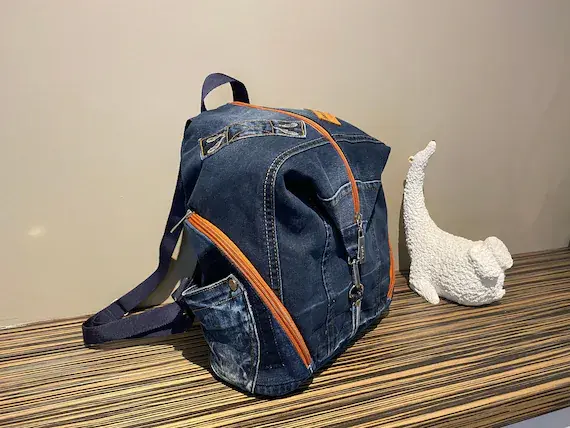
Characteristics of Denim
Denim is a cotton-based fabric, but modern denim also uses a mix of stretch and even polyester material to make it more flexible. This twill weave fabric is sturdy and easy to produce.
The twill weave gives the fabric a diagonal pattern where one side of the fabric has color while the other side remains uncolored. In most cases, the yarn receives a coat of dye before weaving the fabric. This weaving technique saves on coloring costs.
Characteristics of Jeans
Jeans are a type of trousers made of denim material. It shares the durability of denim on a base level, but the quality of the final product depends on the stitches.
There are many types of jeans with distinct stylistic features. But the most iconic one is the five-pocket blue jeans. Jeans are breathable, comfortable, and durable enough to last years if you maintain them properly.

Jeans can have widely different color profiles based on how well they are treated or washed. Chemical washing can help reduce the intensity of the color. Stone washing helps retexture the denim fabric to give it a “worn” feel by making it softer.
Why is Denim So Popular?
Denim is a fine material that’s popular all over the world. There are several reasons why this material gained widespread popularity. Here are a few of them:
Easy to Make and High Durability
Denim is a very affordable fabric that utilizes cotton. It’s an easy material to acquire because of mass production. Twill weave of the modern fabric makes mass production easier. The weaving pattern also enhances the structural integrity of the material.
You can get different textures and colors by slightly altering the material composition. Adding a bit of polyester-based elastomer can improve the elastic qualities of the fabric, making it more appealing to the current consumer base. Due to the widespread availability of the material, one can easily make custom denim products as well.
Versatile Fabric
Few fabrics can match the range of denim in terms of sheer versatility. Most people see denim primarily in jackets and jeans, but their use is far more extensive than that. Denim fabrics are used in making shoes, bags, purses, accessories, skirts, shirts, and even furniture.

Many car decorations are also made using denim, and there’s been a recent craze for making hybrid resin and denim products. Things like spectacle frames and some small furniture fall into that category.
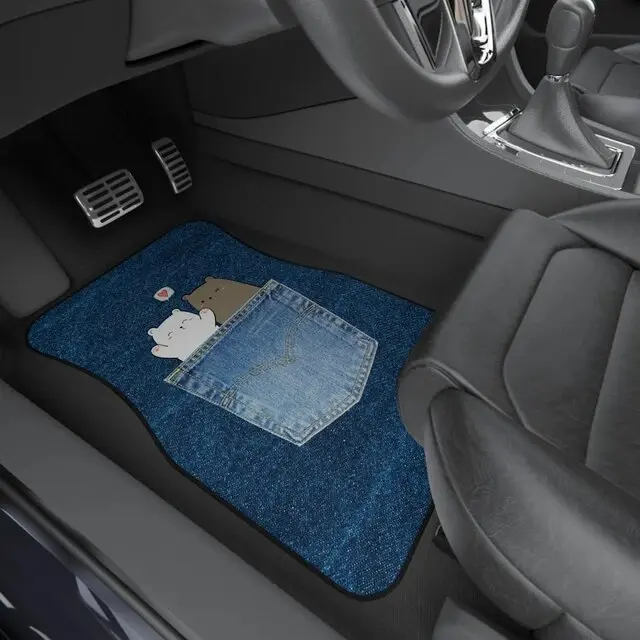
Eco-friendly
Denim is one of the most eco-friendly fabrics in the world because it’s almost 100% cotton. But its contribution to the environment doesn’t end there. The fact that these fabrics last an absurdly long time means there’s less need for producing them. So, it uses fewer resources in the production process.
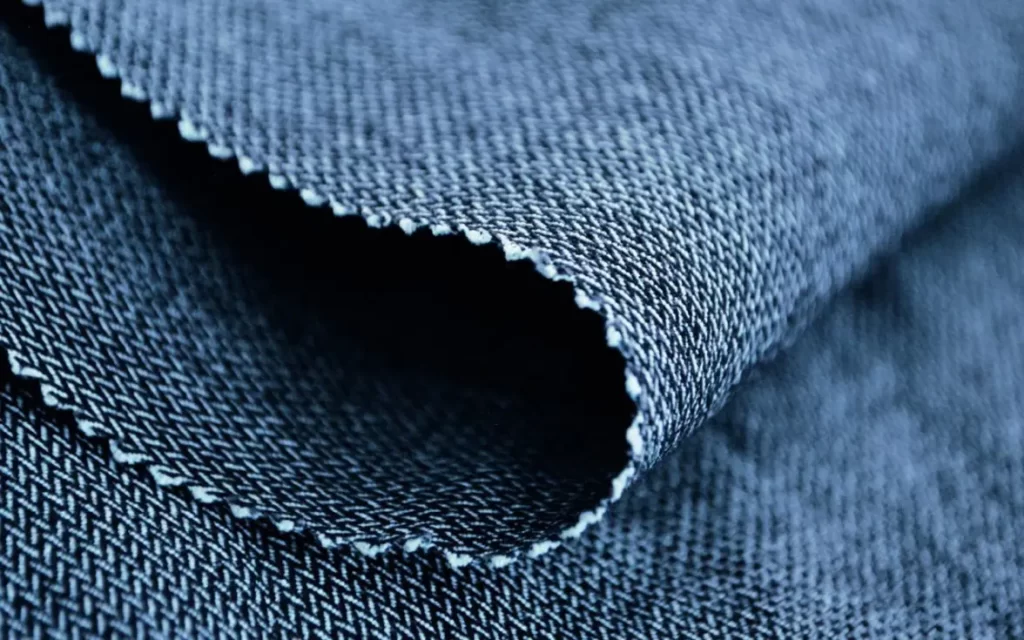
The iconic twill weave of the denim fabric uses two separate types of yarn. Only one of them needs to be dyed, and the twill weave makes the whole fabric look colorful. So, there’s less chemical dye needed for the production of denim.
Reasons Why Jeans Are So Popular
The popularity of modern jeans stems from many factors, including its presence in pop culture. Media popularity and its high utility are the main reasons why Jeans are so popular. Here are some noteworthy qualities of Jeans:
High Durability
Jeans have a nuanced presence in history and have appeared as icons in many cultural movements. But the most fundamental strength of jeans is its durability. Denim, the material for making jeans is exceedingly sturdy, and the design of the modern jeans pants gives it more structural integrity on top of that.
The higher GSM and thread count make these pants much stronger than other casual wear. The thicker fabric allows for the use of stronger stitches so a pair of jeans don’t usually rip or tear without heavy use.
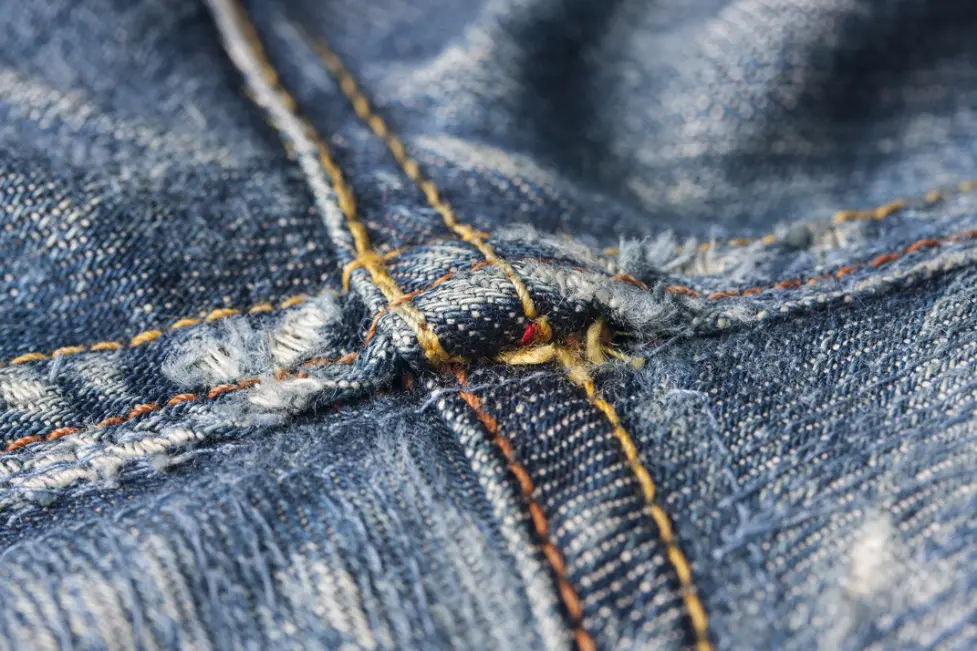
It’s so strong that people artificially reap the jeans to give it a “worn” look advertised in the media. Because if left on its own, it can take years for a pair of jeans to get that kind of look. Jeans are one of the most gracefully aging garments out there.
Outfit Synergy
Jeans are incredibly versatile garments that can work with pretty much any outfit. From T-shirt to dinner jacket, there’s nothing a good pair of jeans can’t handle. Combining that with its natural texture and universal color scheme makes the jeans stand at the top of a fashion hack wardrobe.
No respectable list of must-have pants is complete without at least a jeans option. Jeans are also comparatively inexpensive compared to some other outfits of similar utility levels. That makes it a great choice for people on a budget.
Owning a few good pairs of jeans makes even the laziest couch potatoes look like they care about fashion. It’s one of those outfits that you can wear when you don’t know what to wear.
Easy to Source
Jeans are inexpensive because they are easy to produce. The material lasts a long time, and you can usually find them in any clothing store. And that’s not limited to one or two countries. Jeans are available in any part of the world except North Korea— apparently, the portly fellow running the show there thinks blue jeans are capitalist icons.
Other than that one odd example, jeans are available in virtually all parts of the world. Due to its widespread popularity, it has a certain level of cultural acceptance. So, it’s a staple type of garment if you travel a lot and plan to interact with people in different locales.
Easy Maintenance
The other extremely useful quality of jeans is its extreme ease of maintenance. Denim fabric, the stuff jeans are made of, doesn’t really get dirty easily. Even when they do, you can hardly tell a difference. A light wash is all it takes to get everything squeaky clean.
Experts over the internet have strong opinions on how and when a jean needs washing. But it’s generally alright to throw them in the washing machine and be done with it. Ease of maintenance is one of the major differences between Jeans and slacks.
Types of Denim
Denim is an umbrella term that describes a cotton-based twill fabric. There are various specific types of denim with unique characteristics like raw denim, sanforised denim, stretch denim, waxed denim, etc.
1. Raw Denim
Raw denim is a coarse fabric that receives no additional wash after the dying process. These are durable, but slightly rougher than the washed ones. But many people prefer raw denim clothing because it’s like a blank canvas. You can add custom wear marks and fades on it.
2. Washed Denim
Washed denim is softer and more malleable. Most stores sell washed denim garments because it is slightly more popular with the general public. The fabric can have very distinct profiles based on the washing method used. The stonewash makes the fabric more faded and affects the texture, while chemical wash has more impact on the coloration.
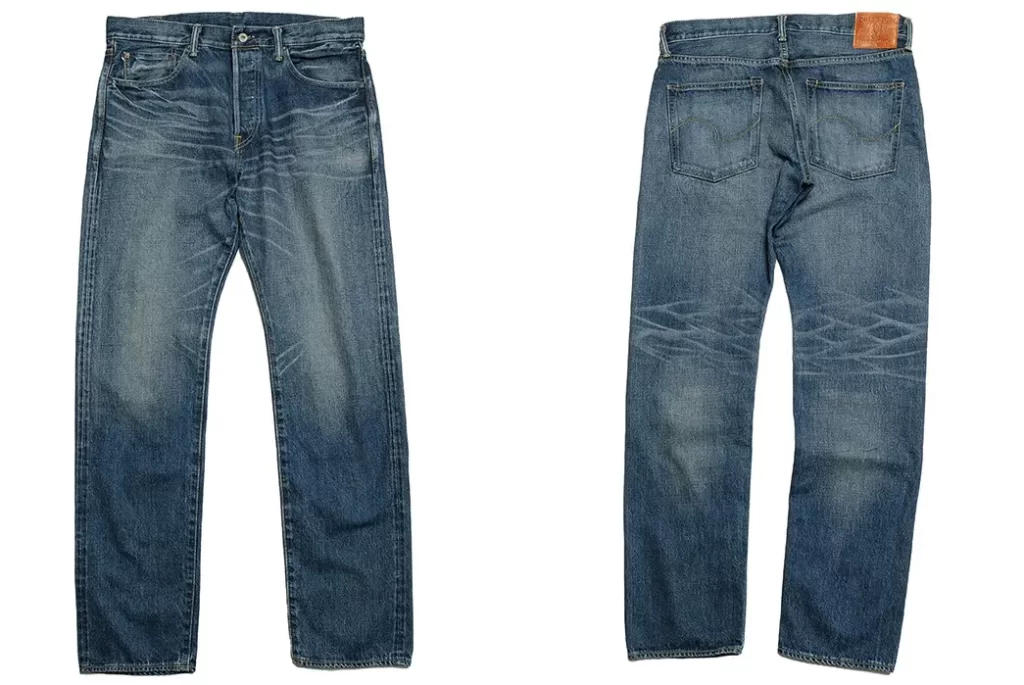
3. Stretch Denim
Stretch denim became more popular in the past few decades due to the increasing demand for skin-tight fit in fashion. Traditional denim clothing has a full cut to facilitate easy movement. Regular denim feels restrictive in a tight fit. Hence the clothing industry came up with the idea to add stretch fabric. Altering Cotton and the synthetic polymer ratio can give the fabric varying degrees of elasticity.

4. Waxed Denim
Waxed denim is rarely seen in the fashion industry because this particular type of fabric is primarily used for work clothes. The waxed inside layer makes the fabric more resilient against moisture. It was perfect for people who worked in damp environments.
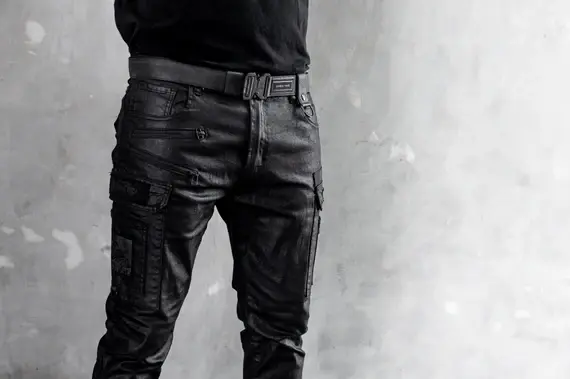
This type of fabric has better insulation and is usually heavier than the standard denim. It was the go-to apparel for outdoor exploration. At least before stronger synthetic materials entered the market.
Conclusion
Hopefully, you’ve found this article helpful in clearing out some of the confusion surrounding the terminology of Denim vs Jeans. Denim is the fabric, and Jeans is the garment.
There are several types of denim material, and there are several types of jeans and pants. Contact us for more information about the latest fashion market.

